AD100 Designer Pierre Yovanovitch Revives an Arts and Crafts Home in London
The client knew exactly what she wanted: not too many floors. High ceilings. Lots of light. And a south-facing garden. Her husband had two requests: a small hammam and a swimming pool in the garden.
It was a tall order for a family home in central London, but eventually they found it—an unassuming but generously proportioned Arts and Crafts property nestled on a quiet street in Chelsea, the once-bohemian enclave turned posh residential district. After glimpsing the overgrown gardens—now planted with climbing honeysuckles, hedges, maples, and magnolias by the Natural Gardening Company—and a yard just big enough to carve out a narrow, stone-lined lap pool, they were sold.
“When you look out the window, you almost feel like you’re in the country,” says the wife of the home she shares with her husband—they’re both globe-trotting businesspeople—and two teenage daughters. “We woke up one morning and found ducks swimming in the pool.”
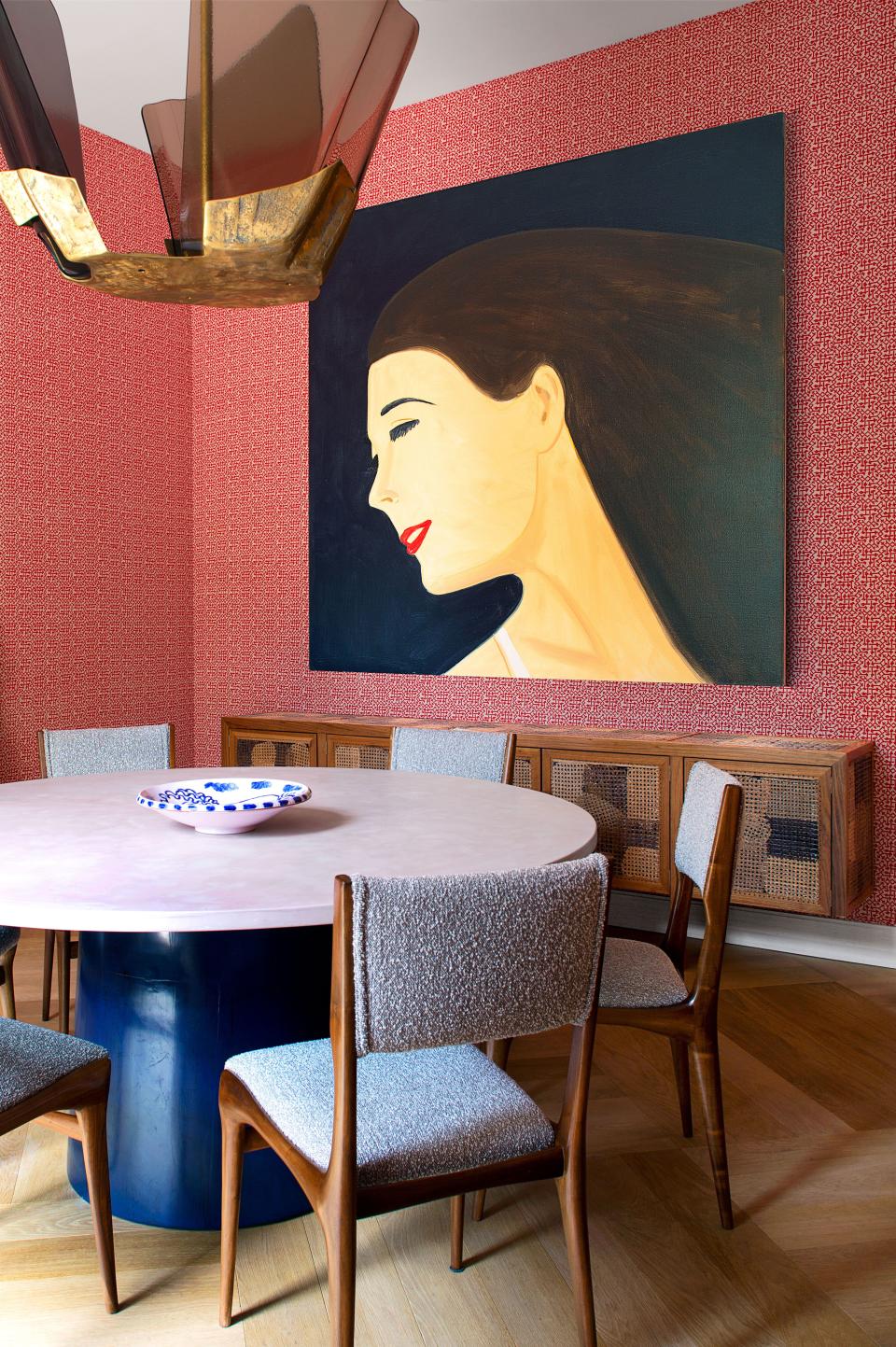
That feeling of the countryside doesn’t stop at the façade. The homeowner wanted interiors that were casual, comfortable, and finely crafted, so she called on Pierre Yovanovitch, the Paris-based AD100 designer and noted artisan whisperer. (His oeuvre will be showcased in a monograph—Pierre Yovanovitch: Interior Architecture—being published by Rizzoli in September.)
“I wanted the interior to be in line with her lifestyle,” Yovanovitch says of the wife, with whom he had previously worked on the family’s chalet in the Swiss Alps. “She’s easygoing, never formal—she likes color, and she’s always laughing.”
Aside from a few beloved elements—the staircase, the grand fireplace in the master bedroom—Yovanovitch stripped away most of the interior detailing to establish a clean, contemporary slate. By moving the dining room to the first floor, for instance, Yovanovitch transformed the home’s original formal eating quarters downstairs into a chestnut-lined spa that opens to the revitalized garden and new pool.
“I didn’t want to create an Arts and Crafts revival,” he explains, “but I wanted to keep the spirit of the house.” In a nod to the property’s turn-of-the-century roots, he filled it with custom woodwork like intricately carved doors and moldings, made-to-measure oak wall paneling, and built-in shelving. Similarly, he points out, “I wanted the fireplaces to look like they were made in the old times,” so he called on ceramist Armelle Benoit, a longtime collaborator, to fabricate them in enameled ceramic tiles and bricks.
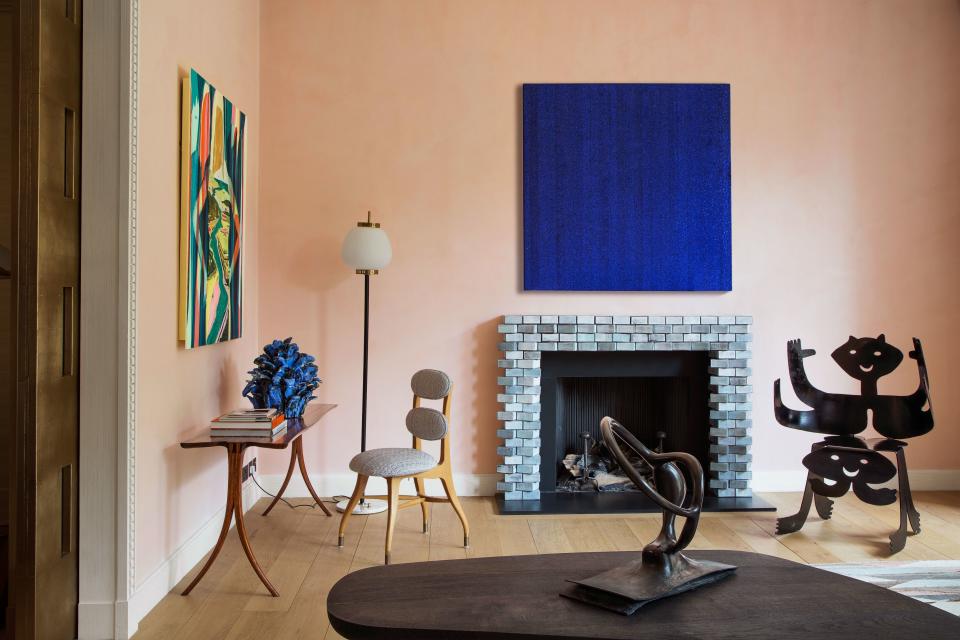
Benoit went on to make a curved bench and a poolside ceramic fresco in her deep-hued, earthy glazes, modern foils to the folk-art ceramics—an alligator from Ethiopia; vases from Hungary—the wife has long collected. “This was a studio house—it belonged to an artist,” she notes. “So it was very important to incorporate craft.”
Indeed, handmade touches—a Yovanovitch hallmark—figure throughout. Twentieth-century works in wood, like a cork-and-sycamore console by Paul Frankl, a squiggly oak bench by Peter Danko, and a range of furnishings by Danish masters Kaare Klint and Børge Mogensen, feel newly fresh in this setting. They are mixed with pieces by modern masters, like the wicker buffet by Brazilian maestros the Campana Brothers, bespoke furnishings by British collective the New Craftsmen, and a specially commissioned brass-and-glass light fixture by Milan master Vincenzo De Cotiis.
Step Inside the Pierre Yovanovitch-Designed Residence
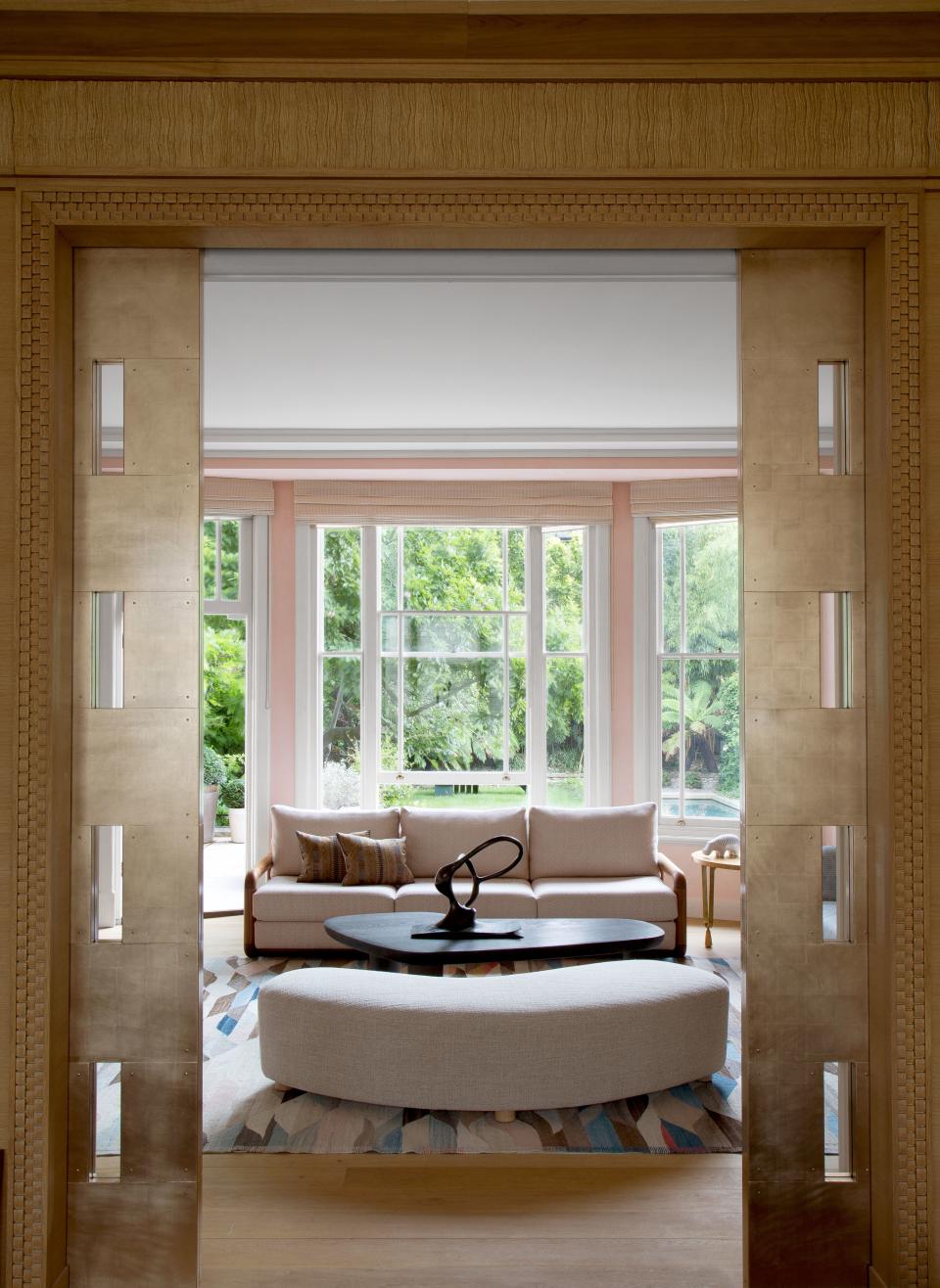
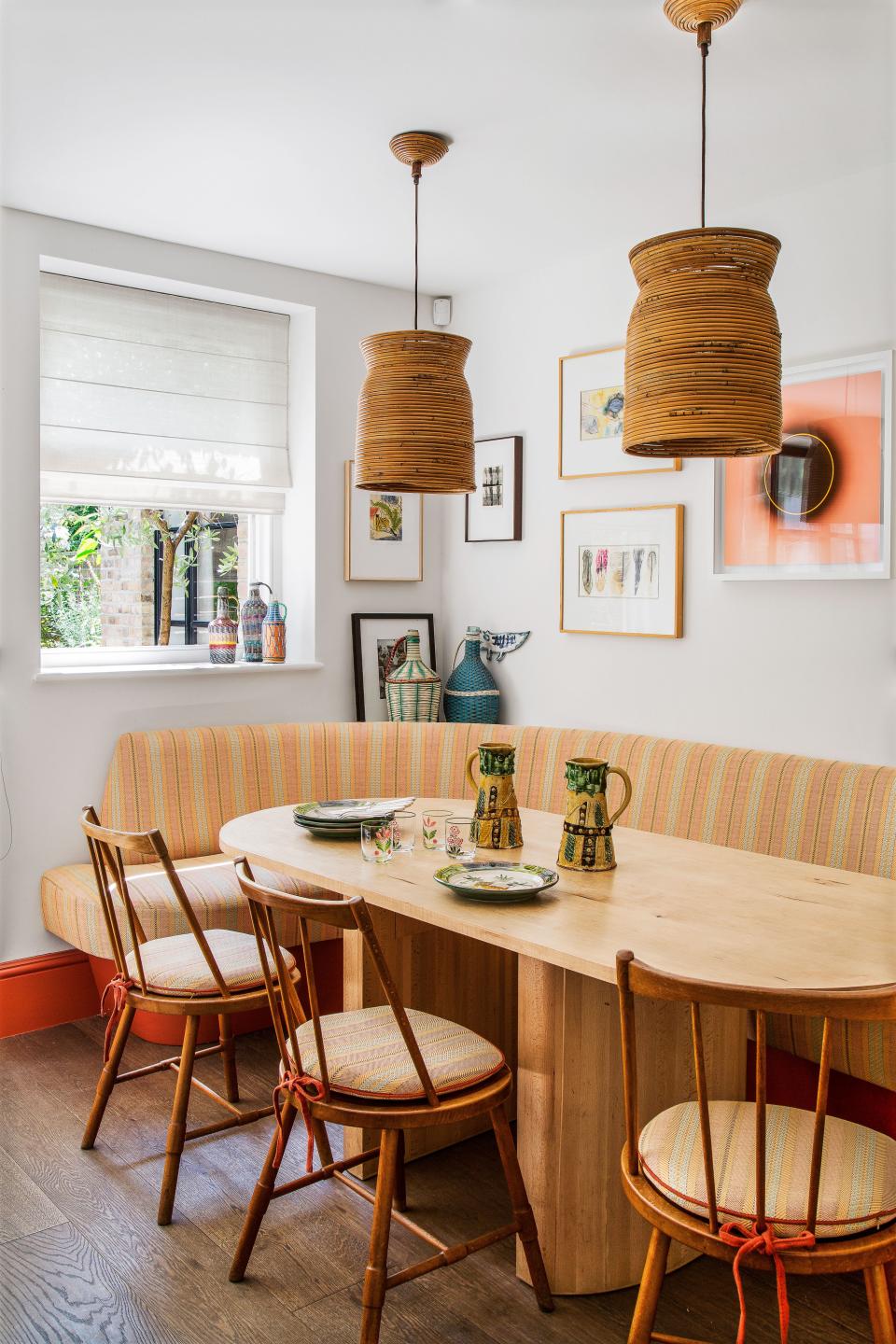
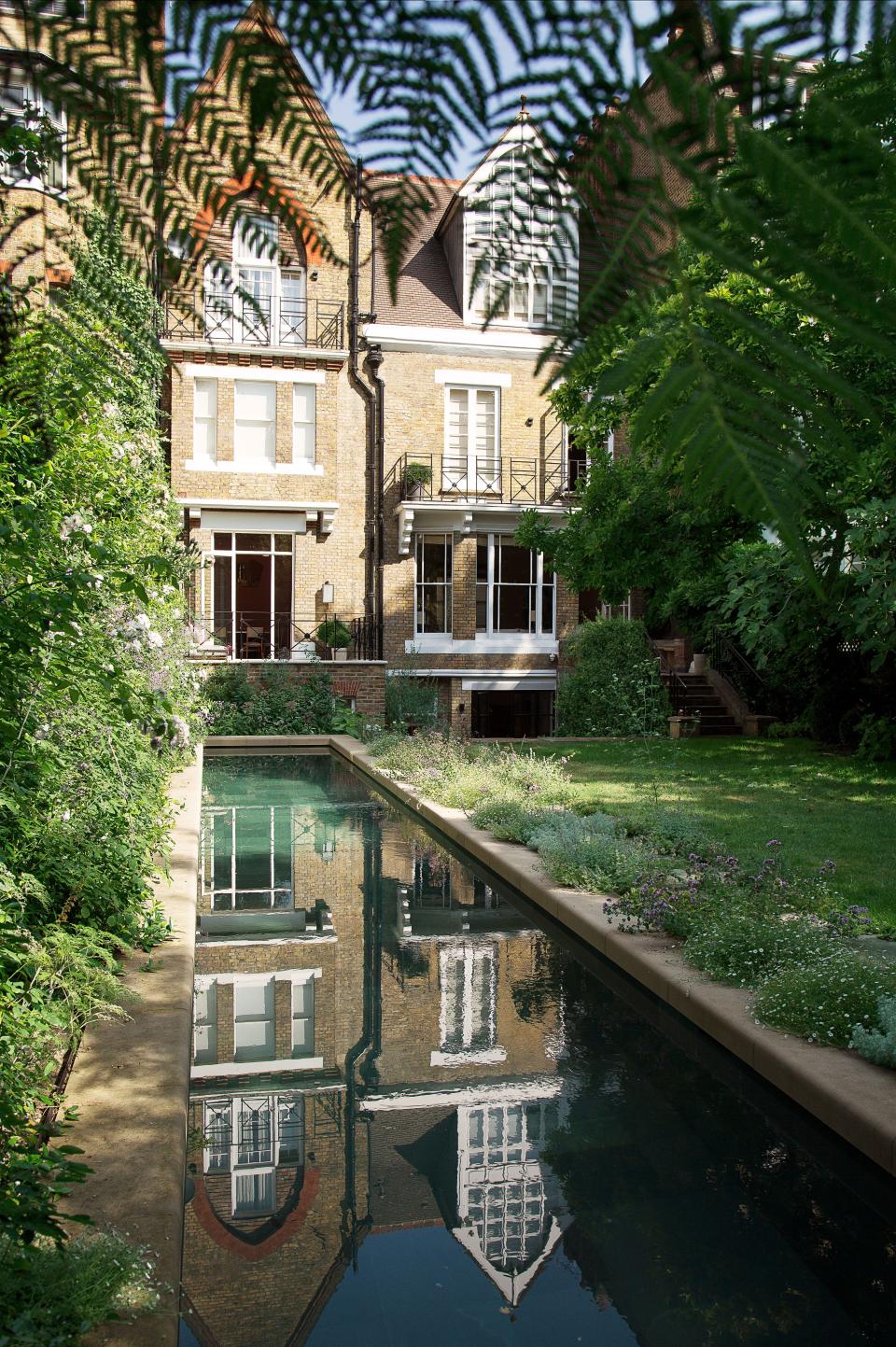
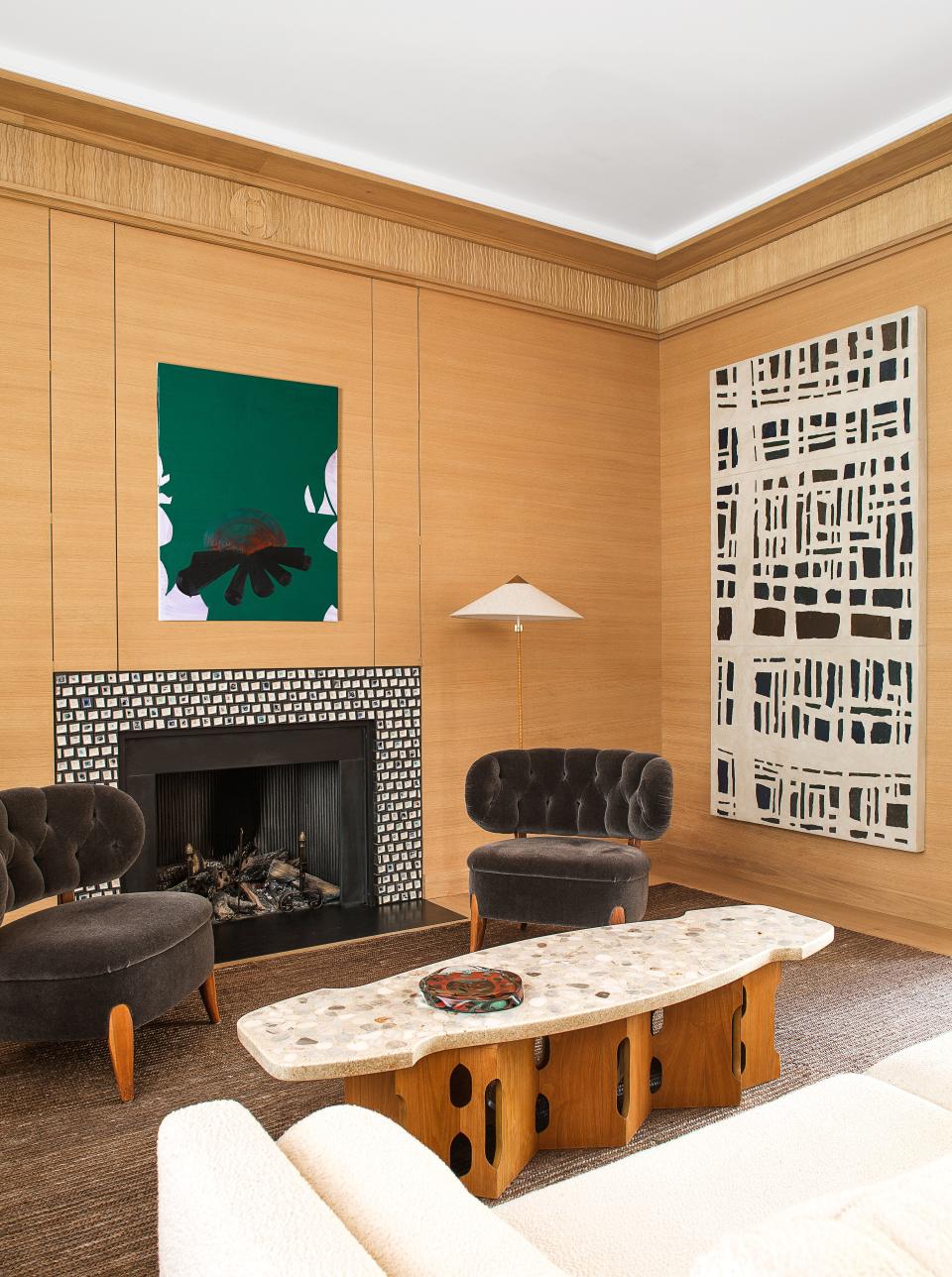

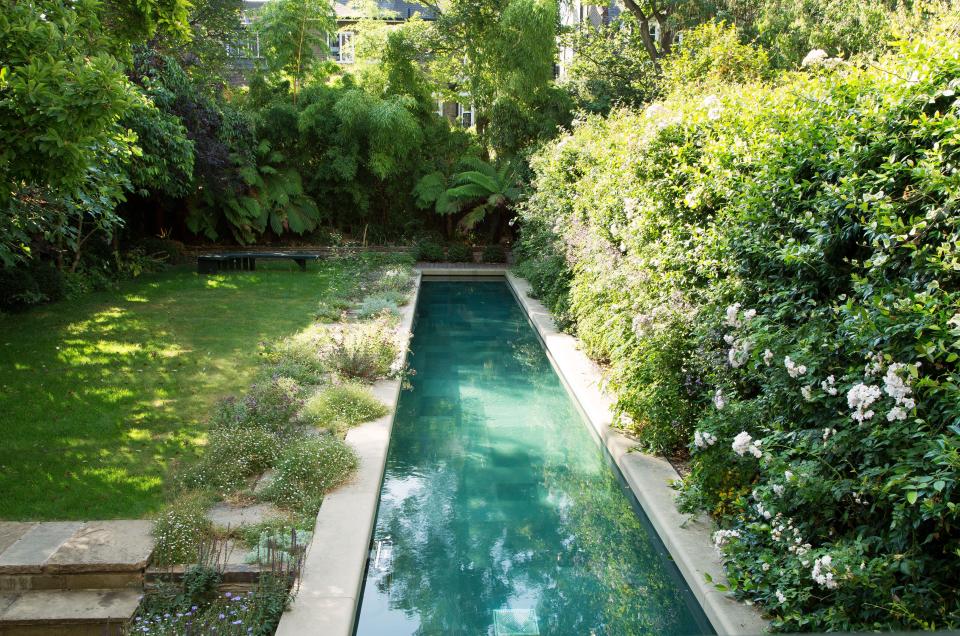

But while such attention to detail is typical of a Yovanovitch project, the palette he employed here is less expected. “It’s a bit more colorful than Pierre would normally do,” the wife points out. “But he was very happy to go down that road.”
The designer took inspiration from the family’s diverse art collection. A coral-hued Fortuny silk sheathes the walls in the dining room, serving as backdrop for a portrait by Alex Katz. The azure glaze of Benoit’s ceramic mantelpiece in the living room relates to a vivid Liza Lou artwork made from deep cobalt-blue glass beads. And the otherwise serenely hued entryway gets a jolt of fun from one of Ugo Rondinone’s neon stone totem structures. “I saw an exhibition, and they had a room full of these,” the homeowner says of the exuberant artwork. “It just made me so happy I thought, That’s exactly what I want for the house—to feel that happiness.”
She gets the same burst of energy from an anthropomorphic chair by Roberto Matta—a Chilean artist who dabbled in furniture design. “My dad is Chilean,” she says. “But I didn’t know that Matta did furniture until Pierre found two other wood pieces for our place in Switzerland.”
Yet none of the art—or the furniture, for that matter—feels too precious. After all, says Yovanovitch of his client, “when she sits on a sofa, she wants it to be comfortable.” And his many custom sofas and banquettes—made with master in-house carpenter Pierre-Eloi Bris and wrapped in textural cottons, wools, and linens from Jouffre—do not disappoint.
“We use every part of the house,” says the client. “Right now there are six teenagers down in the living room playing music so loud. We’ve only lived here a year and a half, but it really feels like we’ve been here forever.”
Originally Appeared on Architectural Digest

